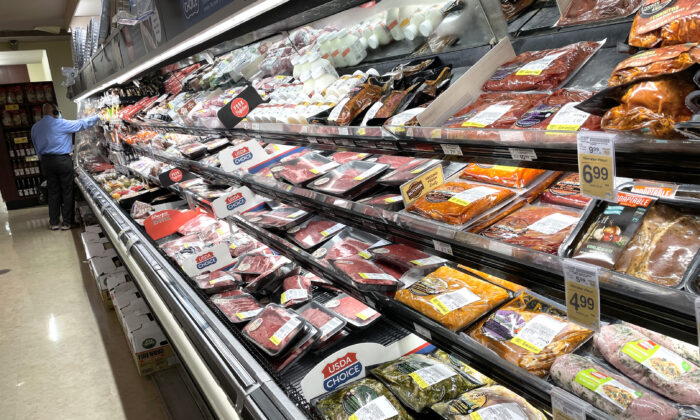USDA's Economic Research Service (ERS) updated the 2021 farm sector profit projections last week....
Food Prices Hit Highest Level in a Decade

While much of the inflation story has been focused on surging energy costs and products affected by the semiconductor chip shortage, such as used cars, rising food cost signals are increasingly flashing red. Food prices across the world have risen to their highest levels in a decade on the back of tightening supply conditions coupled with robust demand, according to the Food and Agriculture Organization of the United Nations (FAO).
The FAO’s food price index, which measures world food commodity prices, has surged by 32.8 percent in the 12 months through September, coming in at a reading of 130 points, a level not seen since 2011. On a month-over-month basis, the index rose 1.2 percent.
Accounting for the bulk of the rise in the index were higher prices of most cereals and vegetable oils. The FAO vegetable oil price index was up 60 percent in September from a year earlier, and 1.7 percent higher than in August. The cereal price measure was up 27.3 percent over the year last month, and 2 percent from August.
Dairy and sugar prices also rose in September by an over-the-year 15.2 percent and 53.5 percent, respectively, while the meat price index was up 26.3 percent above its year-earlier level.
As the U.S. economy rebounds, packaged food companies are grappling with inflation, with Conagra Brands Inc. saying on October 7 that it would increase prices again on its frozen meals and snacks. They are facing rising costs of ingredients, including edible oils, proteins, and grains, forcing the company to increase prices on frozen goods by 3.5 percent and on staple meals by 3.3 percent.
Food-makers General Mills, Campbell Soup, and J.M. Smucker also have raised wholesale prices in response to rising ingredient and freight costs.
Pork and beef prices have surged in the past few months, while the Labor Department’s August inflation report showed that meat, poultry, fish, and eggs were up 8 percent over the past year and 15.7 percent from prices in August 2019, before the pandemic. Beef prices jumped 12.2 percent over the past year, and bacon was up 17 percent during the same period.
Experts say increasing energy costs around the world could exacerbate the problem. “It’s this combination of things that’s beginning to get very worrying,” Abdolreza Abbassian, Senior Economist at the UN’s Food and Agriculture Organization, told Bloomberg in a recent interview. “It’s not just the isolated food-price numbers, but all of them together. I don’t think anyone two or three months ago was expecting the energy prices to get this strong.”
Food price inflation is also driving up consumer expectations for future price increases. The Fed’s August survey of consumer expectations showed that Americans anticipate food prices to rise by 7.9 percent in a year, higher than the overall inflation expectation of 5.2 percent.
Federal Reserve officials have repeatedly characterized the current bout of inflation as “transitory” though they have increasingly expressed concern about the risk of a de-anchoring of inflationary expectations. That’s where confidence in the “transitory” narrative falls and people start to believe and behave as if inflation will be far stickier than previously believed, impacting wage and price-setting behavior and potentially even sparking the kind of upward wage-price spiral that bedeviled the economy in the 1970s.
EDITOR’S TAKE:
This article is a perfect reminder of why your CAD team is encouraging CAD members to “Look Beyond Your Lot”! What does that mean? In simple terms, the general economy may be headed for a pull back as consumers wrestle with rising inflation and other concerns that could impact their well-being.
As the article points out, there are few left who believe inflation is “transitory”. Now consumers will be placed in a position of balancing their income and savings with rapidly rising costs for fuel, food and other items they need just to exist on a day-to-day basis. Economists are also suggesting that home foreclosures may again be on the rise. Bottom line – consumers will likely pull back from making major purchases. At the same time, your lot will start filling with 2021 and 2022 models to sell, even though that’s not the case right now.
So, we are suggesting that CAD members look beyond the current situation and ask who will be your best customer in three, six, twelve or more months. We strongly suggest you look at farmers. They are in a solid financial position for the most part and will be looking for ways to lower their tax burden in 2021 and probably 2022.
In addition, farmers are also concerned about rising input cost, and you have the perfect antidote – AgPack! This equates to thousands of dollars in exclusive rebates and discounts on products they need and use on the farm.








